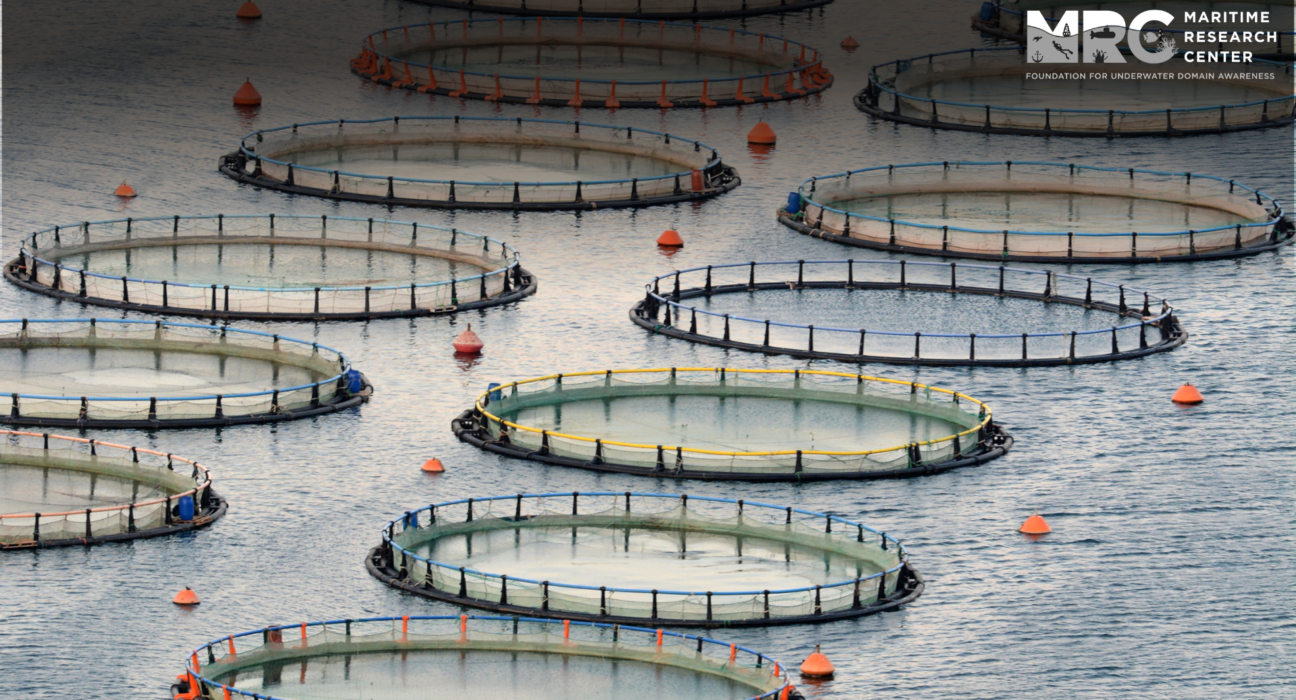- Aquaculture and Agriculture can go hand in hand, boosting the overall cultivation sector.
- In India, aquaculture requires huge investment in terms of skill assistance for the farmers, as most of the population of farmers are unfamiliar with cultivation procedures.
- Technology can reduce the guesstimates involved in cultivation methods and provide accurate estimates.
- Uplifting poor sections of society can be done by opening new job opportunities and aquaculture is one such industry to go with.
Economic Demography of India
‘Without farmers, no country can progress’
Such a statement is strictly true for a country with a significantly high contribution from farming activities to the nation’s GDP. Agriculture is the dominant sector of India, in terms of the number of citizens involved directly or indirectly with agricultural activities. Not only in economic terms (Gross Domestic Product) but also Agriculture is supporting India socially by providing a stable source of income to more than 50% of India’s current workforce. It is an important point to ponder upon how the climatic variabilities and climate change are going to affect the agriculture sector and what will be the short-term and long-term impacts of such scenarios. To mitigate such effects, by reducing the dependence on only agriculture, aquaculture and/or aquafarming provides a wide range of opportunities in Indian waters and have the potential that can be harnessed to diversify crops to aquatic plants and marine creatures.
Aquaculture involves the cultivation of marine plants and animals (creatures) for further processing in various value-added products (for example the use of seaweeds in pharmaceuticals) and/or for human consumption (for example the use of Shrimps in human delicacies).
Developing a complete aquaculture Industry supports women’s empowerment, farmers’ support, ample employment opportunities, and a diversified raw material sector. Let’s look at some of the case studies that cover how rural communities adapting to aquaculture helped them sail smoothly on the way leading to prosperous lives and healthy community relations.

Social Prospects associated with aquaculture
- Social inclusion and empowerment: By giving underrepresented groups, such as women and young people, the chance to participate in farming operations, aquaculture can foster social inclusion. Aquaculture can be advantageous for women in particular because many of the duties involved are compatible with their strengths and skills. Social obstacles can be removed and marginalized groups can gain power through increased participation in aquaculture, resulting in more inclusive and equitable communities.
- Aquaculture projects frequently entail community participation and cooperation, which promotes community development. Farmers get together to share resources, trade information, and work as a team to solve problems. This cooperation encourages social cohesion among farmers and builds a sense of community.
The Case Studies of Indian Farmers
Orrisa, India
The case study of a rural area Kodalguri, orissa is a prime example of how aquaculture has transformed the lives of farmers and socially and economically uplifted them.
The city of Kodalguri is in the Khariar block and is 80 Km away from the (nearest) Nuapada district headquarters. The city is dominated by the tribal people, looking for a stable source of jobs and income.
The project launched to initiate aquaculture farming in the city showed the following optimistic results:
- Given that most homes now receive fish through free distribution as well as purchase, fish consumption has significantly increased as of late. Fish was offered to the villagers at a 20% discount, which was considerably less than the market price. Consequently, the household fish intake has increased from roughly 2 kg per capita to 6 kg per capita per year as a result of the improvement in fish output.
- About 25% of the village’s total income was made available to the people as net income from aquaculture. The program’s formation of a 14-member fishing group whose primary source of income is fish catching was a noteworthy accomplishment. They were now regularly engaged in fishing across numerous villages. Also, about 10 unemployed youngsters in the hamlet have started selling fish as routine harvesting operations, allowing them to sell fish by bicycle in the outlying villages.
- Each person traded 25 to 30 kg of fish per day, making between Rs 300 and Rs 400 in profit, which is a substantial amount for them, considering their earlier income irregularities.
Such success depicts that an investment in terms of education to tribal families can bring prosperity to their lives. There is a lot of potential in these tribal people that can be harnessed for their own and their country’s benefit.
Assam, India
Assam, a part of the seven sisters (the name for the cluster of northeastern states of India) has a subtropical climate and abundant aquatic bodies to support aquaculture. Despite the availability of the above-mentioned vast aquatic resources, the share of the state to total fisheries production is not up to the mark comparatively. To address the low production and achieve higher economic security, A pilot project was launched with a group of tribal farmers, who were resource-poor and not having a stable source of income. The study of their economic status revealed that more than 80% of the participating farmers were leaving below the poverty line (BPL).
Aquaculture and economic prospects
It is not hard to argue how the development of any industry supports not only the growth of the nation but also benefits the citizens of the nation. This growth phenomenon is interleaved and positively supports each other. The immense opportunities associated with aquaculture in terms of economic returns can be justified by the following points:
- Ensuring Food production and security: Aquaculture plays a vital role in meeting the growing demand for seafood products. As wild fish stocks face increasing pressure from overfishing and environmental factors, aquaculture provides a sustainable and reliable source of seafood. By producing fish and other aquatic organisms in controlled environments, aquaculture helps ensure a stable supply of protein-rich food for human consumption.
- Providing Employment and livelihood opportunities: Aquaculture operations generate employment opportunities across various stages of production, including farming, processing, marketing, and distribution. In many coastal and rural areas, aquaculture serves as a significant source of income and livelihood for local communities. Small-scale aquaculture ventures provide opportunities for entrepreneurship and economic development, particularly in regions with limited alternatives for employment.
- Contributes to Nation’s Trade and Export: Aquaculture products are traded globally, contributing to international trade and economic exchange. Many countries engage in aquaculture exports, supplying seafood products to domestic and international markets. India registered an all-time high export of seafood worth USD 7.8 billion in the past financial year.
In the ponds of farmers, they were able to achieve the productivity of 1800 kgs of biomass per hectare of land. Some of the other monetary benefits to the farmers were:
- The farmers have now started to farm fish seeds. These seeds are the basic input for the cultivation of the fisheries, where they get converted to larvae post-hatching. Therefore, as a result, they were able to develop a local Magur species fish hatchery.
- The farmers harvested the fish when they attained 100 gms of weight. This allowed them to cut down on their consumption costs and enjoy a more nutritious meal from their grown crops.
- The farmers were taught to utilize most of their efforts, they were explained how they can cultivate Ranjit, a high-yielding variety of paddy using shallow tube wells for irrigation purposes. This helped them fetch additional income and economic security.
- Women empowerment: The self-help groups (SHGs) were developed to help women farmers to help in micro-crediting and also spreading awareness to other women to join and form the self-help groups. This was aimed at initiating a financial support system that can provide loans for farming activities to women.
There are many more stories, from Vietnam, and Indonesia (a classic example of their women empowerment), and many states of India too, where aquaculture has shown positive results.
National Policies, and Schemes
In the context of India, it becomes highly important that there is ample governmental support to back the rural community and encourage them to practice aquaculture by providing subsidies and also back the country’s aquaculture infrastructure through welfare policies as well as schemes to promote research and development.
Some of the policies oriented toward the research and development of the aquaculture framework in India are:
- National Fisheries Policy (NFP): The NFP 2020 places a strong emphasis on the sustainable growth of the aquaculture and fisheries industries. It strives to advance ethical fishing methods, boost value addition, increase fish production, and open up employment prospects. To promote the expansion of aquaculture, the strategy places a strong emphasis on infrastructure development, technological transfer, market connections, and talent development.
- Blue Revolution: The goal of the 2015-launched Blue Revolution program is to increase the nation’s productivity and seafood output. It emphasizes boosting fishers’ and fish farmers’ incomes, enhancing fisheries infrastructure, encouraging entrepreneurship in the industry, and assuring sustainable aquaculture practices. The initiative offers financial aid, educational opportunities, and technical help to promote the use of contemporary methods and technologies.
- There are other organizations like the National Fisheries Development Board(NFDB) to handle the infrastructure development of aquaculture.
A Feasible Approach
‘India is in a digital race!’
The above statement aptly depicts the current situation where India is leading and promoting digitization in every sector possible. Rather than going by conventional aquaculture practices, an introduction of a digital ecosystem will better connect the farmers in a complete marine supply chain.
Some of the measures that can take in this direction are:
- Having digital identities of farmers: Building a network of aquaculture farmers helps them to have a sense of their community and people with like thoughts and visions. That can help in developing various microeconomics and infrastructure built by people of these community
- Farm Digitization: Using AI/ML along with the booming techniques like remote sensing, the Internet of Things can help understand farm statistics better and will yield more insights into the farmer than what he can see and observe
- Skill assistance: A one-time investment to train the farmers to grow aquatic species most optimally can help India achieve splendid productivity targets.
It should not be seen as a substitute for agriculture but as a choice open for communities to switch from agriculture if more returns are associated with aquaculture. Case studies have shown the real-life success stories of the vision. Correct planning and strategic investments towards such a vision can help India in the long run as the large impact of aquaculture on India’s export have already been discussed earlier.

Shlok Nemani
About Author
Shlok Nemani is a fourth-year student, in the Department of electrical engineering, at IIT Bombay. He has worked as an intern at Texas Instruments, and Maritime Research Center in his third year of study. He is currently doing a fellowship at the Maritime Research Center where he is working on developing technological solutions for sustainable expansion of aquaculture. His projects span through the concepts in Cryptology and hardware.



